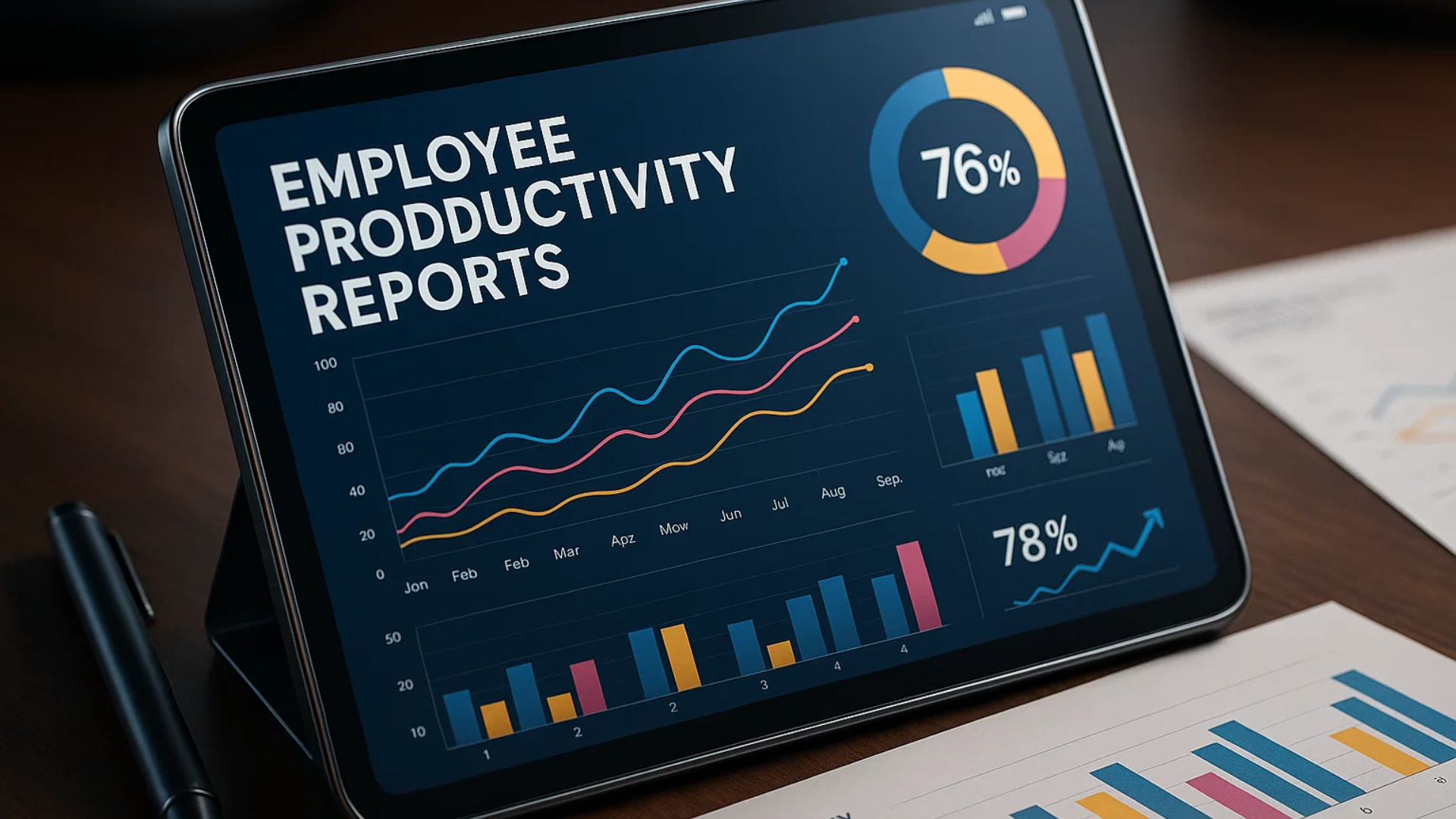Employee Productivity Reports: Useful Insight Or Modern Workplace Surveillance?

In today’s fast-paced business environment, organizations are under constant pressure to optimize performance, streamline workflows, and empower employees to do their best work. Leaders aren’t just looking for numbers, they want meaningful insights that help them understand how work gets done and how their teams can thrive. That’s why modern performance analytics and digital workplace tools have become so essential.
But while the technology has improved, many companies still struggle to interpret the data they collect. What should you measure? How do you turn metrics into action? And how can you use insights ethically and transparently? We’ll dive into all of that and more.
In the next section, we’ll explore how smarter tracking tools and clear communication can transform the way your teams collaborate and perform without sacrificing trust or autonomy. This is where employee productivity reports often become a foundational piece of the puzzle, providing structured visibility into patterns and opportunities for improvement.
Understanding Modern Workplace Metrics
Today’s workplace metrics go far beyond simple timesheets. Companies are leveraging behavioral analytics, workload distribution dashboards, and collaboration heatmaps to understand how projects progress and where bottlenecks form.
This shift represents a move from monitoring as a compliance tool to using data as a growth tool. When approached with transparency and empathy, analytics can actually boost engagement by helping employees understand expectations and reduce inefficiencies that frustrate them.
Key Types of Performance Data
Modern performance data tends to fall into a few major categories:
-
Output Metrics: Completed tasks, deliverables, quality of work
-
Engagement Signals: Communication patterns, meeting load, response times
-
Workflow Indicators: Time spent on core tasks vs. administrative overhead
-
Collaboration Insights: Cross-team interactions, shared project involvement
Not all metrics are equally valuable for every team. The best organizations tailor their analytics to match their goals and culture.
How Analytics Tools Improve Team Performance
Digital performance platforms are designed to surface patterns that might go unnoticed in day-to-day operations. They help answer critical questions:
-
Is the workload distributed evenly?
-
Which processes cause repeated delays?
-
Are team members spending too much time in meetings?
-
How does cross-department collaboration impact project speed?
By bringing clarity to these issues, analytics become a proactive strategy instead of a reactive one. Leaders can prevent burnout, allocate resources more effectively, and support employees with targeted coaching or training.
Why Transparency Matters
One of the biggest concerns around performance tracking is privacy. Employees worry about being micromanaged or judged unfairly. That’s why communication is everything.
Successful teams follow these best practices:
-
Explain the purpose of analytics upfront
-
Share access to certain dashboards so employees can monitor their own progress
-
Set boundaries around what data is collected and what isn’t
-
Use insights for coaching, not punishment
When people feel respected, they naturally embrace tools that make their work easier.
Practical Ways to Apply Workplace Insights
Once you have clear data, what do you do with it? Here are some practical strategies businesses use to turn insights into real results:
1. Optimize Workflows
Identify repetitive tasks that can be automated, meetings that can be shortened, and processes that create unnecessary friction.
2. Improve Collaboration
Look for departments that frequently interact and explore how to streamline shared responsibilities, documentation, and communication channels.
3. Reduce Burnout
Use workload heatmaps to spot where pressure spikes. Offer additional support, redistribute tasks, or employees work schedule cooldown periods when needed.
4. Guide Professional Development
Metrics can reveal where certain team members shine or where they may need additional training. This helps align coaching with actual work patterns.
5. Strengthen Goal-Setting
Data-driven goals are clearer, fairer, and easier to track. They encourage accountability while reducing ambiguity.
Building a Culture of Continuous Improvement
Technology alone won’t transform a workplace. Culture plays an equally vital role. Teams that embrace experimentation, feedback, and shared responsibility tend to thrive in data-rich environments.
Here’s what helps:
-
Encourage employees to ask questions about insights
-
Celebrate improvements openly
-
Revisit metrics regularly to ensure they still align with team priorities
-
Avoid information overload keep dashboards simple and relevant
A workplace built on clarity and trust naturally performs better.
You can also watch: EmpMonitor | How to Download & Check Employee Productivity Reports With EmpMonitor | EmpMonitor How-To Tutorial
Conclusion
As organizations navigate digital transformation, one of the most powerful advantages they can leverage is thoughtful, ethical use of performance data. When combined with transparency, communication, and a supportive culture, insights from employee productivity reports can unlock meaningful improvements across teams and workflows. Ultimately, it’s not about monitoring, it's about empowering people to do their best work with confidence and clarity.
FAQs
1. What’s the difference between performance analytics and traditional monitoring?
Performance analytics focuses on understanding patterns and optimizing workflows, whereas traditional monitoring often focuses on oversight and compliance.
2. How can companies ensure employees feel comfortable with data tracking?
Clear communication, transparency about what’s collected, and emphasizing coaching over discipline help build trust.
3. What tools are commonly used to analyze workplace performance?
Platforms may include time-tracking software, project management systems, collaboration dashboards, and engagement analytics tools.
4. How often should teams review performance data?
Most organizations benefit from weekly or monthly reviews, depending on project cycles and team needs.
5. Can small businesses benefit from workplace analytics?
Absolutely insights help even small teams improve efficiency, balance workloads, and support growth.
- Art
- Causes
- Crafts
- Dance
- Drinks
- Film
- Fitness
- Food
- Spiele
- Gardening
- Health
- Startseite
- Literature
- Music
- Networking
- Andere
- Party
- Religion
- Shopping
- Sports
- Theater
- Wellness






